INTERNACIONAL
Una guerra de Estados Unidos con Irán sería una catástrofe

Estados Unidos está alarmantemente cerca de verse arrastrado a otro enredo militar en Oriente Medio, esta vez por Israel, que cada vez parece menos un verdadero aliado.
El sorpresivo ataque de Israel contra Irán el viernes casi con certeza ha destruido cualquier posibilidad de alcanzar el acuerdo nuclear que Estados Unidos perseguía desde hacía meses. El primer ministro israelí, Benjamin Netanyahu, también ha puesto en peligro imprudentemente a los 40.000 soldados estadounidenses desplegados en la región, poniéndolos en riesgo inmediato de represalias iraníes, lo que podría llevar a Estados Unidos a una guerra con Irán.
Independientemente de cómo Irán interprete nuestro papel en los ataques, Israel parece haber actuado sin avisar a Estados Unidos con la suficiente antelación para que tomara las precauciones adecuadas. Aunque el presidente Trump reconoció el jueves la inminencia de un ataque israelí, Estados Unidos apenas inició las evacuaciones voluntarias de familias de militares y personal no esencial de la embajada el miércoles por la tarde, mientras que el Departamento de Estado comenzó a elaborar planes para la evacuación masiva de ciudadanos estadounidenses apenas horas antes del ataque.
Trump, y todos los estadounidenses, deberían estar furiosos. Ahora, Netanyahu y las voces más agresivas en Estados Unidos casi con seguridad presionarán a Trump para que ayude a Israel a destruir las instalaciones de enriquecimiento nuclear de Irán, algo que será difícil de lograr para el ejército israelí por sí solo y que incluso el ejército estadounidense podría ser incapaz de lograr. Sería el peor error de la presidencia de Trump.
Una guerra con Irán sería una catástrofe, el fracaso culminante de décadas de extralimitación regional por parte de Estados Unidos, y precisamente el tipo de política que Trump ha criticado durante mucho tiempo. Estados Unidos no ganaría nada luchando contra un país débil al otro lado del mundo que causa problemas en su región, pero que no representa una amenaza crítica para nuestra seguridad. Y Estados Unidos perdería mucho: lo más trágico, las vidas de sus militares, junto con cualquier posibilidad de escapar de nuestro tormentoso pasado en la región.
Los estadounidenses de todas las tendencias políticas se oponen a la guerra con Irán, presumiblemente porque comprenden las dos grandes lecciones de la experiencia estadounidense en Oriente Medio durante los últimos 25 años. Las guerras preventivas no solo no funcionan, sino que también tienen consecuencias imprevistas con un impacto duradero en la seguridad nacional de Estados Unidos.
La desafortunada invasión de Irak en 2003 también fue una guerra para prevenir la proliferación nuclear. El desastre sobrevino, y no solo porque Saddam Hussein no tuviera armas de destrucción masiva. La invasión estadounidense desencadenó el caos y la guerra civil en Irak e inclinó la balanza de poder regional a favor de Irán al permitirle establecer nuevas milicias subsidiarias en el país. También condujo al eventual ascenso de ISIS.
No hay motivos para pensar que una guerra con Irán se desarrollaría mejor, y podría resultar considerablemente peor. De ser atraído, la intervención del ejército estadounidense probablemente comenzaría con ataques aéreos en lugar de una invasión terrestre, dado el gran tamaño de Irán y su imponente terreno montañoso. Pero como demostró la infructuosa campaña de 7 mil millones de dólares contra los hutíes, los ataques aéreos son exorbitantemente caros, conllevan un riesgo significativo de bajas estadounidenses y es probable que fracasen de todos modos. Estados Unidos ni siquiera logró la superioridad aérea sobre los hutíes, un grupo militante heterogéneo con la base de recursos de un país empobrecido, Yemen, sobre el cual ni siquiera pudo consolidar el control.
Irán tiene una capacidad de defensa mucho mayor que la de los hutíes. Si los ataques aéreos no logran destruir la capacidad nuclear iraní, la presión sobre las fuerzas estadounidenses aumentaría drásticamente para combinar un bombardeo aéreo con un componente terrestre, quizás algo similar al «modelo afgano» que Estados Unidos utilizó para derrocar a los talibanes. Sabemos cómo resultó. A pesar de la intención de mantener esa guerra pequeña y breve, un enfrentamiento que comenzó con tan solo 1300 soldados estadounidenses en noviembre de 2001 se convirtió en una desastrosa ocupación de 20 años que alcanzó los 100 000 soldados estadounidenses en su punto álgido en 2011 y que finalmente causó la muerte de 2324 militares estadounidenses.
Incluso en el mejor de los casos, en el que Estados Unidos contribuyera a destruir la mayoría de las instalaciones nucleares iraníes, solo retrasaría el progreso de Irán hacia el desarrollo de una bomba. La guerra no puede impedir el desarrollo de armas a largo plazo, por lo que la diplomacia o la negligencia benigna siempre han sido las mejores opciones para lidiar con Irán. Su programa de enriquecimiento tiene más de 20 años, se extiende por múltiples sitios en la República Islámica y emplea a incontables miles de científicos, 3.000 solo en las instalaciones de Isfahán. Es probable que suficientes científicos iraníes sepan cómo enriquecer uranio apto para armas como para que Israel no pueda eliminarlos a todos, a pesar de sus ataques aéreos dirigidos explícitamente contra ellos.
Suponiendo que persista cierta continuidad en el conocimiento técnico, Irán probablemente podría reconstruir sus instalaciones nucleares rápidamente. Y un régimen iraní desafiante sin duda estaría decidido a armar sus instalaciones para disuadir futuros ataques israelíes y estadounidenses.
Esa probabilidad, sumada a la insistencia de Israel en que Irán nunca debe obtener la bomba, sugiere que la teoría de la victoria de Netanyahu podría basarse en una lógica subyacente de cambio de régimen. En apoyo de este argumento, Israel parece estar realizando ataques dirigidos a desmantelar el liderazgo del régimen en Teherán. El líder israelí ha aceptado desde hace tiempo la conveniencia de un cambio de régimen en Irán e insinuó en septiembre que podría ocurrir «antes de lo que se cree». Como declaró una fuente diplomática francesa a Le Monde el otoño pasado: «En ciertos círculos circula la idea de que quizás los israelíes nos estén guiando hacia un momento histórico, que este es el principio del fin del régimen iraní». La caída del régimen sirio Bashar al-Assad en diciembre intensificó las especulaciones sobre una convulsión similar en Irán. Algunos halcones políticos estadounidenses y miembros de la diáspora iraní afirman ahora que el cambio de régimen se está volviendo inevitable; como lo expresó John Bolton, exasesor de seguridad nacional de Trump: «Es hora de pensar en la campaña para un cambio de régimen en Irán».
Eso es pensamiento mágico. La historia ha demostrado una y otra vez que bombardear un país pone a su población en contra del atacante, no en contra de su propio régimen, a pesar de su profunda impopularidad. Las imágenes ya muestran a iraníes manifestándose en las calles, no para oponerse a su gobierno, sino para instar a represalias contra Israel. E incluso si el régimen fuera derrocado, ¿qué ocurriría entonces? A pesar de todos los defectos del gobierno iraní, un mal gobierno es preferible al caos de la inexistencia de gobierno. ¿De verdad queremos convertir a Irán en un estado fallido, como Irak o Libia después de que Estados Unidos atacara a esos países?
Trump suele presumir de su historial durante su primer mandato de no haber iniciado nuevas guerras. Ese historial merece la pena convertirlo en un legado. Debe resistir la presión de Netanyahu y de los halcones en su país para evitar una autolesión trágica e irreparable.
Kelanic es directora del programa de Oriente Medio en Defense Priorities.
INTERNACIONAL
Alleged ‘serial criminal’ nabbed in Michigan traffic bust after Biden administration released him into US

NEWYou can now listen to Fox News articles!
United States Customs and Border Patrol caught an alleged Tren de Aragua gang member during a traffic stop near Detroit Wednesday.
The traffic stop in Shelby Township by Maryville Station CBP officers was triggered by a fake license plate on a vehicle. CBP said the three people inside the car were all in the United States illegally, and one of them is Venezulean national Manuel Zavala-Lopez, an alleged Tren de Aragua gang member who entered the country during the Biden administration in May 2023 and was released, according to DHS.
The group was named a foreign terrorist organization early on during President Donald Trump’s second term, along with MS-13. Some of those alleged members have been sent to the Terrorism Confinement Center in El Salvador for detention.
FBI TAKES DOWN ANTI-TREN GANG MEMBERS IN LARGEST BUST YET IN VIOLENT MIGRANT TURF WAR
«Zavala-Lopez is a serial criminal who’s traveled across the U.S. committing violent crimes. He has an outstanding warrant for failure to appear on a felony assault charge in Denver, Colorado. He has also been charged with robbery resulting in physical injury, criminal possession of a weapon intent to use, assault, possession of stolen property and petty larceny in New York,» DHS Assistant Secretary Tricia McLaughlin said in a statement.
«Thanks to our brave law enforcement, he is off the streets and will no longer be able to terrorize American citizens. He will remain in ICE custody pending removal.»
Alleged Tren de Aragua member Manuel Zavala-Lopez was arrested by United States Customs and Border Protection July 23, 2025, near Detroit. (Mike Kline (notkalvin) via Getty Images; U.S. Customs and Border Protection)
«The arrest of this Tren de Aragua gang member, who has a history of firearms and other criminal charges and was wanted on an active warrant out of Denver, Colorado, for failure to appear, removes another dangerous criminal illegal alien from our country and enhances public safety,» Detroit Sector Chief Patrol Agent John R. Morris said in a statement.
«This marks the second arrest of a gang member from a foreign terrorist organization this month and underscores the relentless efforts of our agents and law enforcement partners. These cases highlight the critical value of interagency cooperation in removing these criminal threats from our communities,» Morris added.
The 30-year-old, who is not named but had his mugshot disclosed by the agency, was previously charged with violent robbery as well as weapons and immigration violations, according to a news release.
«This Tren de Aragua gang member, who had no business being in our country, let alone roaming the streets of Shelby Township, serves as our department’s commitment to keeping our community safe and getting dangerous individuals like this out of our community,» Lt. Mark Benedettini of the Shelby Township Police Department told Fox News Digital in an email.
TRUMP’S CRACKDOWN NETS OVER 2,700 ALLEGED MEMBERS OF NOTORIOUS VENEZUELAN GANG
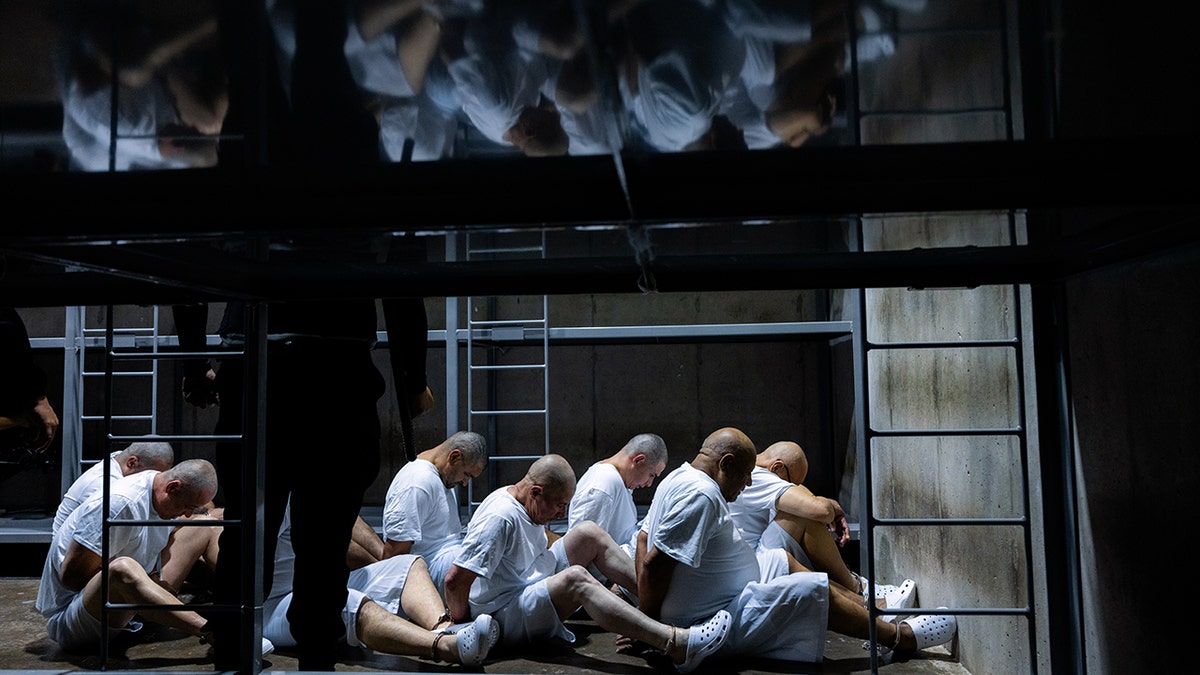
Seventeen members of Venezuela’s Tren de Aragua gang and members of the MS-13 gang were deported to El Salvador by the U.S. in San Salvador, El Salvador, March 31, 2025. (El Salvador Press Presidency Office/Anadolu via Getty Images)
Traffic stops are considered a major aspect of border and immigration enforcement, and people and drugs are often caught as a result.
Two Salvadoran nationals in the country illegally were also arrested by CBP in Detroit earlier this month, the agency announced July 10.
CLICK HERE FOR MORE IMMIGRATION COVERAGE
Border Patrol agents responded after a call for extra help during an «altercation» at a motel in Sterling Heights.
One of the men «admitted» to being a member of MS-13 and said he previously served 20 years behind bars in the Central American country for killing someone from a rival gang.
VENEZUELAN GANG SUSPECT IN US ILLEGALLY ALLEGEDLY ATTEMPTS TO MURDER FEDERAL AGENT DURING ARREST
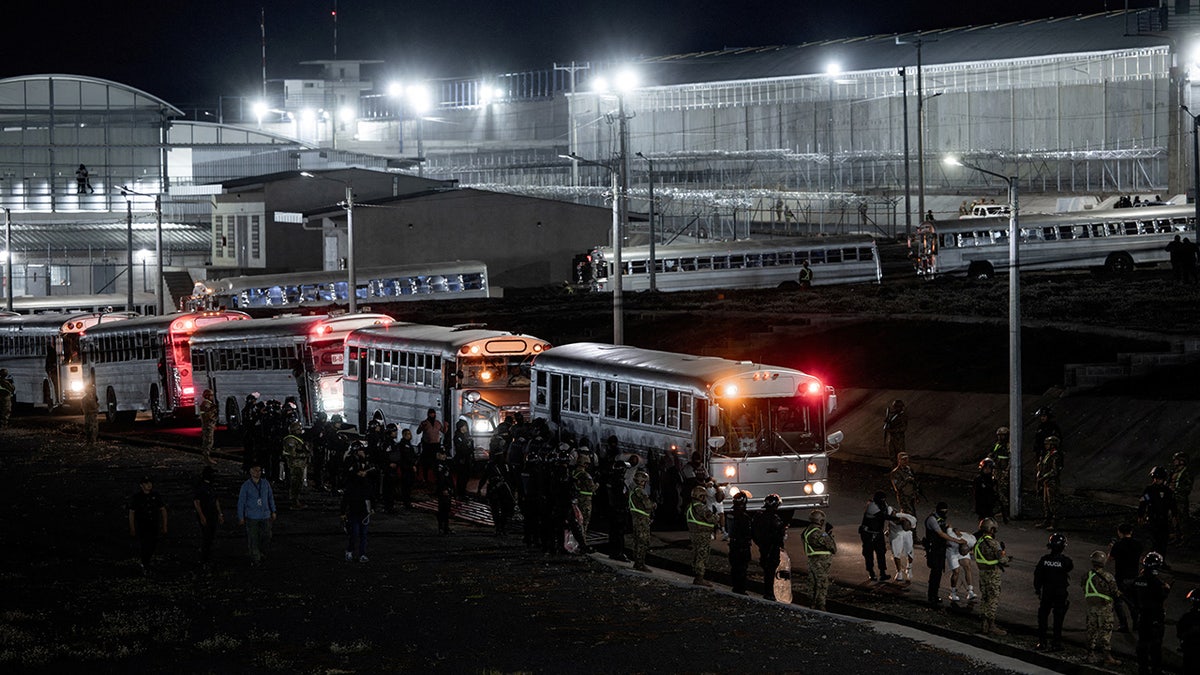
Salvadoran police officers escort alleged members of the Venezuelan gang Tren de Aragua recently deported by the U.S. government to be imprisoned in the Terrorism Confinement Center prison as part of an agreement with the Salvadoran government in Tecoluca, El Salvador, in a handout image obtained March 16, 2025. (Secretaria de Prensa de la Presidencia/Handout via Reuters)
«This is a major win for the U.S. Border Patrol and the safety of our communities,» Detroit Sector Acting Chief Patrol Agent Javier Geronimo Jr. said in a statement at the time.
CLICK HERE TO GET THE FOX NEWS APP
«This arrest is a clear example of how agents and our law enforcement partners are protecting our towns by removing violent criminals from our country.»
INTERNACIONAL
Starmer says UK to recognize Palestinian state if Israel doesn’t agree to ceasefire, Hamas must ‘disarm’
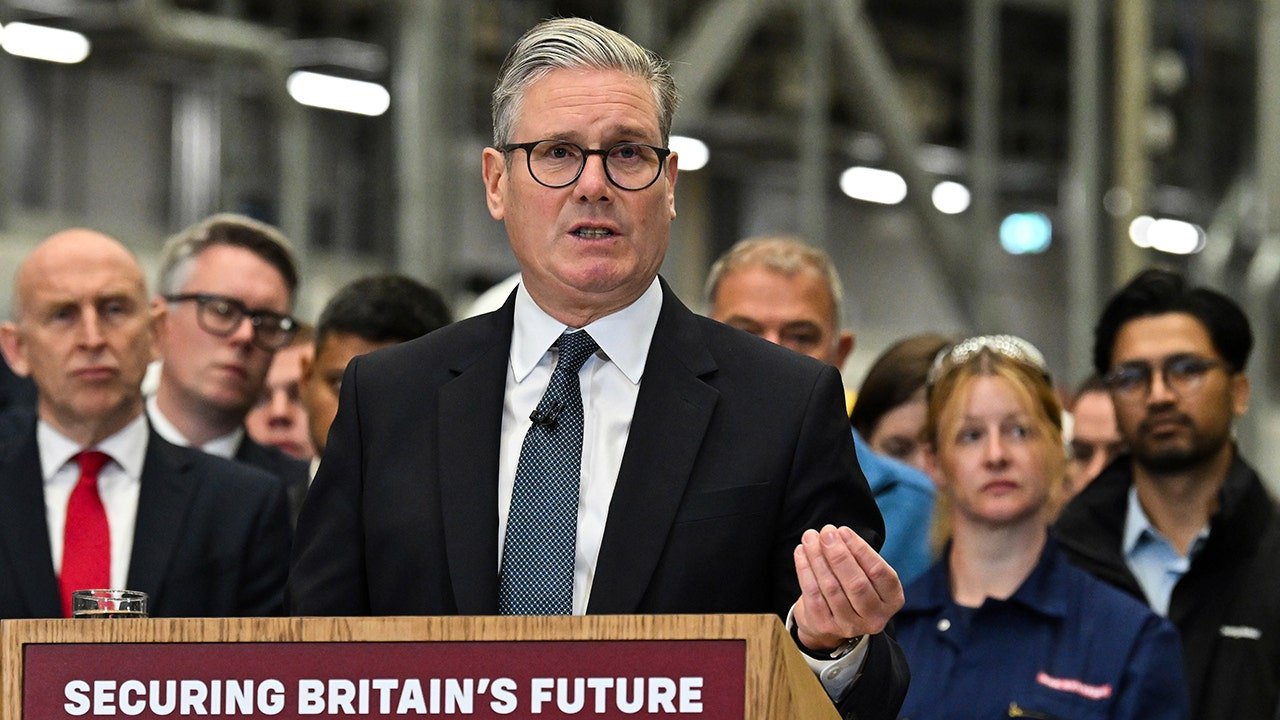
NEWYou can now listen to Fox News articles!
The United Kingdom will recognize a Palestinian state if Israel does not agree to a ceasefire and move toward peace in Gaza by September, U.K. Prime Minister Keir Starmer warned Tuesday.
Starmer made the announcement during a press conference on Tuesday, just a day after meeting with President Donald Trump in Scotland and discussing the Israel-Hamas war and the hunger crisis in Gaza.
«I can confirm that the U.K. will recognize the State of Palestine by the United Nations General Assembly (UNGA) in September, unless the Israeli government take substantive steps to end the appalling situation in Gaza, agree to a ceasefire and commit to a long-term sustainable peace, reviving the prospect of a two-state solution,» Starmer told reporters. «This includes allowing the U.N. to restart the supply of aid and making clear there will be no annexations in the West Bank.»
«Meanwhile, our message to the terrorists of Hamas is unchanged and unequivocal. They must immediately release all the hostages. Sign up to a ceasefire, disarm and accept that they will play no part in the government of Gaza,» he continued.
NEWS OUTLETS ‘DESPERATELY CONCERNED’ FOR THEIR JOURNALISTS IN GAZA, URGE ISRAELI AUTHORITIES TO HELP
Britain’s Prime Minister Keir Starmer says the United Kingdom will recognize a Palestinian State unless Israel acts to secure a ceasefire by September. (Andy Buchanan, Pool Photo via AP)
Trump declined to endorse Starmer’s move in a statement to reporters aboard Air Force One. He noted that both Starmer and French President Emmanuel Macron have now moved toward recognizing a Palestinian state.
«Essentially, they’re saying the same thing and that’s okay. But you know it doesn’t mean I have to agree,» Trump said.
Starmer said his government will make a final assessment ahead of the UNGA meeting to determine what steps both Israel and Hamas have taken and make a final decision on recognizing a Palestinian state.
The U.K. leader went on to say that the primary motive behind the announcement is to change the situation on the ground in Gaza as well as facilitate the release of more hostages.
Israel’s foreign ministry rejected Starmer’s announcement in a countering statement on Tuesday.
«The shift in the British government’s position at this time, following the French move and internal political pressures, constitutes a reward for Hamas and harms efforts to achieve a ceasefire in Gaza and a framework for the release of hostages,» the ministry said.
HAMAS LOSING IRON GRIP ON GAZA AS US-BACKED GROUP GETS AID TO PALESTINIANS IN NEED
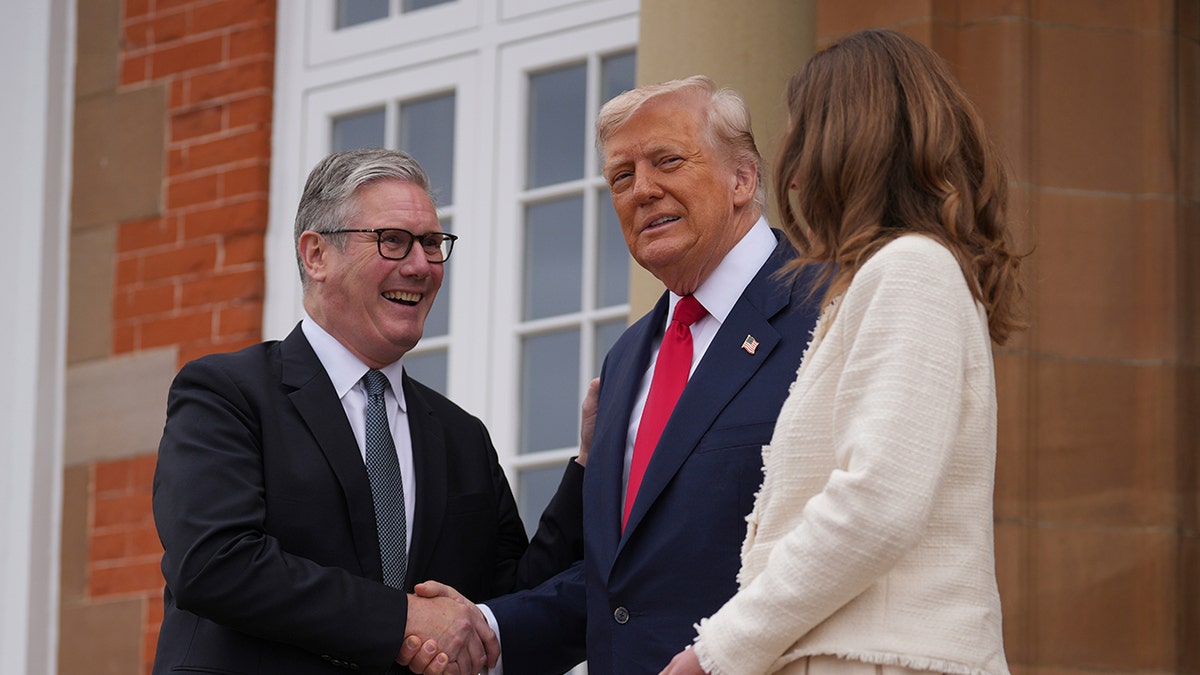
President Donald Trump meets with Britain’s Prime Minister Keir Starmer, left, and his wife Victoria Starmer at Trump Turnberry golf club on Monday, July 28, 2025 in Turnberry, Scotland. (Christopher Furlong/Pool Photo via AP)
The U.K.’s announcement comes just one day after Starmer met with Trump in Turnberry, Scotland, where both leaders condemned the humanitarian and hunger crisis in Gaza.
Trump publicly broke with Israeli Prime Minister Benjamin Netanyahu during the meeting, saying he disagreed that the hunger crisis is a false narrative put forward by Hamas.
«Based on television, I would say not particularly, because those children look very hungry,» Trump said when asked if he agreed with Netanyahu’s claims. «That’s real starvation stuff.»
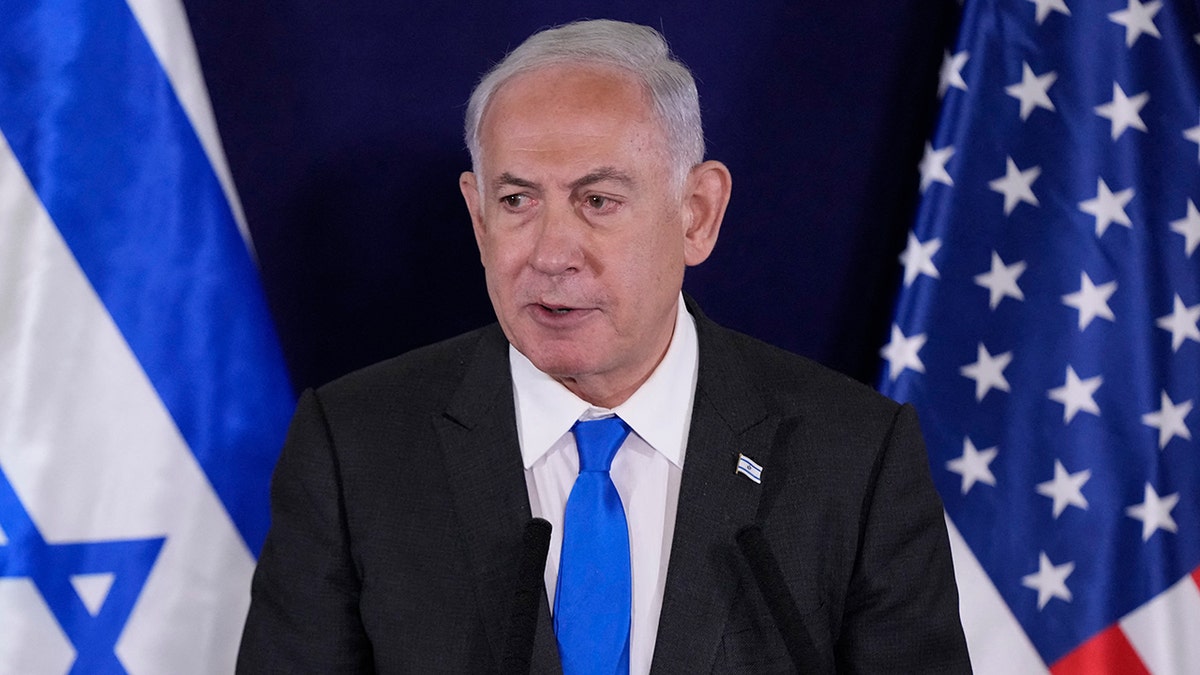
President Trump broke with Israeli Prime Minister Benjamin Netanyahu on claims about Hamas falsifying a hunger crisis in Gaza. (JACQUELYN MARTIN/POOL/AFP via Getty Images)
Trump has highlighted America’s efforts to secure aid for Gaza, noting some $60 million the U.S. spent on the issue in recent days.
«We gave $60 million two weeks ago for food for Gaza, and nobody acknowledged it. Nobody talks about it. And it makes you feel a little bad when you do that,» Trump said during a Sunday meeting with European Commission President Ursula von der Leyen. «And, you know, you have other countries not giving anything. None of the European countries, by the way, gave – I mean, nobody gave but us and nobody said, gee, thank you very much. And it would be nice to have at least a thank you.»
CLICK HERE TO GET THE FOX NEWS APP
Israel has begun conducting aid drops across Gaza in recent days, bending to pressure after months of restricting the flow of aid. The IDF had long said Hamas was stealing much of the resources being sent into the region, a statement Trump and the U.S. have echoed.
INTERNACIONAL
Venezuela, Nicaragua y Cuba concentran el 92,3% del exilio periodístico en América Latina
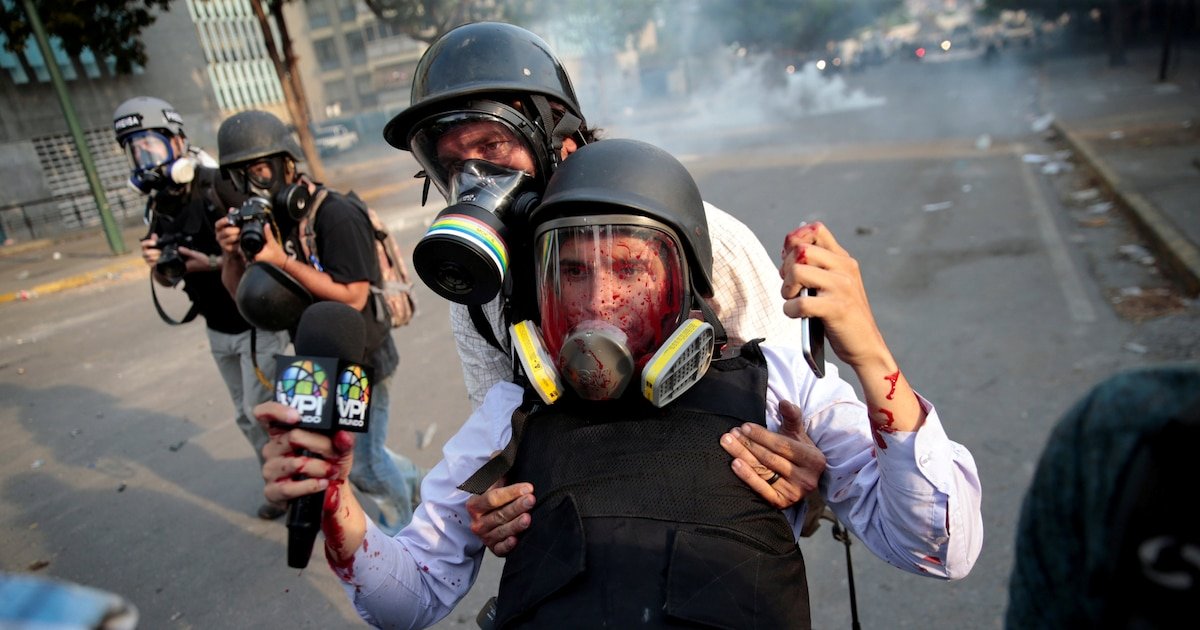
En América Latina, el exilio forzado por razones periodísticas tiene nombre y apellido: Venezuela, Nicaragua y Cuba. Estos tres países concentran el 92,3 % del total de periodistas exiliados en la región, según cifras recientes difundidas por organizaciones de defensa de la libertad de prensa.
El dato, incluido en el informe Voces desplazadas: radiografía del exilio periodístico latinoamericano 2018-2024, expone una tendencia alarmante: la criminalización del periodismo, el cierre del espacio cívico y la represión estatal directa han convertido al oficio en una actividad de alto riesgo. Elaborado por la Universidad de Costa Rica, junto a Fundamedios, la Cátedra Unesco UDP de Chile y la Asociación de Periodistas Venezolanos en el Extranjero, el estudio documenta al menos 477 periodistas venezolanos exiliados, seguidos por 268 nicaragüenses y 98 cubanos. La mayoría ha sido obligada a huir por razones estrictamente vinculadas al ejercicio profesional.
En Venezuela, la salida masiva de comunicadores no solo ha vaciado redacciones y emisoras: ha dejado tras de sí zonas de silencio y desiertos informativos. La censura sistemática, el bloqueo de medios digitales, las detenciones arbitrarias y el acoso institucional han desmantelado el ecosistema informativo. La consecuencia es un vacío que agrava la desinformación y vulnera el derecho ciudadano a la información veraz. Venezuela se ha convertido en el epicentro del desplazamiento periodístico regional.

En Nicaragua, la represión se intensificó tras las protestas sociales de 2018. El régimen de Daniel Ortega ha clausurado medios, confiscado bienes, perseguido judicialmente a periodistas y nacionalizado la censura. Numerosos comunicadores han sido acusados de conspiración y obligados al destierro, incluso despojados de su nacionalidad. El caso del diario La Prensa —cuya redacción fue allanada y cuyos directivos fueron encarcelados— resume el deterioro de las condiciones para informar en el país.
En Cuba, el periodismo independiente enfrenta desde hace décadas un entorno de represión institucionalizada. El auge de medios digitales alternativos desató una nueva ola de hostigamientos. Citaciones policiales, arrestos domiciliarios, vigilancia constante y prohibiciones de salida del país han obligado a decenas de periodistas a emigrar. Medios como 14ymedio, El Estornudo o ADN Cuba han sido blanco frecuente de estas medidas.
Según el informe, en estos contextos la persecución a la prensa es encabezada por el Poder Ejecutivo. La ausencia de contrapesos democráticos facilita el uso de instituciones estatales para hostigar y criminalizar a periodistas. Las estrategias incluyen restricciones legales, campañas de desinformación, acoso digital y detenciones arbitrarias que derivan en el exilio. “En países como Venezuela, Nicaragua, Cuba o El Salvador la persecución y la estigmatización es liderada por el Poder Ejecutivo”, concluye el estudio.

Salir de estos países tampoco es fácil. Numerosos testimonios reportan confiscación de pasaportes, retención de documentos y detenciones en puestos migratorios. Por eso, muchos periodistas optan por rutas irregulares, exponiéndose a nuevos riesgos para evitar ser identificados como críticos del régimen. En el caso venezolano, es común que el desplazamiento ocurra en dos etapas: primero a países de tránsito como Colombia, luego a destinos más estables como Estados Unidos, Argentina, Chile o España.
El impacto del exilio no se limita a quienes huyen. La salida de periodistas deja a la población sin fuentes confiables, consolida el monopolio informativo estatal y normaliza la censura. Además, muchos comunicadores desplazados deben abandonar la profesión por las trabas legales, económicas o administrativas en los países de acogida. La mayoría enfrenta precariedad, discriminación y secuelas emocionales asociadas al desarraigo y el miedo.

Aunque el fenómeno no es nuevo, se ha intensificado con el endurecimiento autoritario y el colapso institucional. La Asociación de Periodistas Venezolanos en el Extranjero estima que más de 1.000 comunicadores han salido del país en la última década. Muchos forman parte del mayor éxodo humano contemporáneo de América Latina: más de 7,7 millones de personas han abandonado Venezuela.

A pesar de todo, muchos periodistas continúan informando desde el exilio, impulsando medios digitales, colaborando con redes internacionales y documentando abusos de poder. Su trabajo, a la distancia y en condiciones adversas, es un acto de resistencia. “Nos quitaron el país, pero no la palabra”, resume una reportera nicaragüense desde Costa Rica. Esa frase sintetiza el costo y el compromiso de un periodismo que, incluso en el exilio, se niega a desaparecer.
cámaras de televisión
























